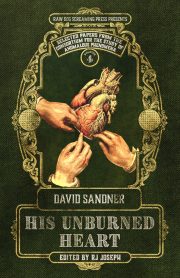Doyle’s SF Genre Rant
by Dr. Debra Doyle
The temptation, in arguments involving genre fiction and literary taste, is to give up and say, “Okay, I’m a philistine, not to mention an unlettered slob. I like the books anyway” — but dammit, I’m not an unlettered slob, I’m a professional writer with an earned doctorate in English literature, and if that combination doesn’t qualify me to hold an opinion on a work of fiction, I don’t know what does.
The theoretical disagreement is a basic one … is written science fiction made better by making it more like serious mainstream fiction (which it’s a pretty lousy version of, for the most part), or is it made better by making more like something else, and if so, what? My own theory — of course I’ve got a Theory; they don’t let you out of grad school unless you can come up with a Theory while standing on one leg in an empty room, which is a good description of the oral exam if you ask me — my own theory is that SF novels aren’t really novels, in the taxonomical sense, at all. They’re actually romances — again in the taxonomical, rather than the sales-rack, sense — and therefore need to be judged by standards other than those which we usually apply to novels. Which means, among other things, that Richness of Invention (or, as an SF reader might put it, “lots of really neat stuff” ) will take precedence over Realism every time.
The dictionary definition of “romance” as a genre is: “a prose narrative treating imaginary characters involved in events remote in time or place and usually heroic, adventurous, or mysterious” (which is sort of right, though the “remote in time or place” clause oversimplifies a much more complex quality of removal from everyday reality.) And the usual definition of “novel” is something on the order of “a book-length work of realistic prose fiction.” Novel and romance, then, share the qualities of length and made-up-ness. Where they part company is on the vexed question of realism — what kind of, in what areas, and how much — and it’s the issue of realism that makes SF so profoundly difficult to classify.
To start with, there are at least two different areas in which realism can be achieved. There’s the physical realism of setting and action (yes, blood really is that color; yes, objects in zero-gee really do float that way; yes, the sky in New York at midnight really does look like that; and so on), and then there’s “psychological realism,” which is where the arguments start to get nasty.
So-called “literary” novels (I really really hate that term, because it implies that anything not made according to that model is not “literary,” i.e., not art and not worthy of the attention paid to art, but we’re stuck with the phrase until something better comes along) . . . ahem, let me start over . . . so-called “literary” novels look for both kinds of realism but give pride of place to the latter. Science fiction, on the other hand, pays a peculiar and obsessive kind of attention to the first kind of realism, but frequently ignores modern notions of psychological realism completely. (In inferior examples, this produces cardboard characters; in superior ones, characters like Lois McMaster Bujold’s Miles Vorkosigan, who are memorably larger-than-life.) And in any case, science fiction is employing the kind of realism that it does use in the interest of doing a profoundly unrealistic thing: those “adventures remote in time or place” we encountered in the definition of romance.
Why does all this occupy my mind to the extent that it causes me to break out into multi-screen posts at the push of a button?
Because there are, as I see it, two conflicting artistic ideologies working to shape contemporary science fiction. Both parties want to make the genre better, everybody involved seriously cares about what they’re doing and why they’re doing it . . . and their prescriptions for improvement are, I think, mutually exclusive. One group believes that contemporary SF becomes “better” as it draws closer to the “modern realistic prose fiction” pole; but other people (me included) believe that striving to make SF more like serious mainstream fiction isn’t going to get you good SF, it’s going to get you second-rate mainstream, and that Step One toward achieving best-of-breed SF is the recognition that the proper model to emulate isn’t The Novel at all, but The Romance.
I could go on like this for hours. Somebody stop me before I theorize again . . . .
And the question comes up from the floor, “What specific romances-in-the-broad-sense do you think might be good models for SF?”
Speaking for myself, as a medievalist I tend to draw strongly on that particular body of literature — I don’t think it’s a coincidence that SF and fantasy are a haven for refugees from my old discipline. Norse sagas were a big influence on me, especially their combination of understated style and larger-than-life characters (a saga isn’t a romance in the technical sense, of course; it’s a separate form of its own, with roots in historiography and hagiography of all things . . . but don’t get me started on that, either). Of the later stuff, Dumas was important to me, for the sense of panache which mainstream realistic prose fiction sadly lacks. And let’s not forget Melville’s Moby-Dick, which is usually regarded as a novel but which actually has a strong romance component in its makeup — it definitely shares romance’s (and good SF’s) combination of exciting stuff happening to larger-than-life characters (what Northrop Frye called fiction in the high mimetic mode), as well as SF’s obsessive attention to realism and technical detail in particular areas (think about all those chapters on whales and whaling — in an SF story, that’d be the point where the narrator spends a block of time talking about the hyperspace equations.) To make a long list short, however: I think that an aspiring SF romancer should read all sorts of nonmodern and/or nonwestern long prose fiction, just for the demonstration that the thing we call “novel” isn’t the only booklike object that can be written within those parameters.
And I believe that those of us who write SF-as-romance (as opposed to “romantic SF” and “SF romances,” which have their own problems both with the mainstream and within SF, but which aren’t what we’re talking about right here) need to stop thinking of ourselves as throwbacks to a more primitive era, or as the sleazy lower class of an increasingly respectable genre, and own up to being the countervailing literary force that we are and that I believe the field itself needs us to be.


